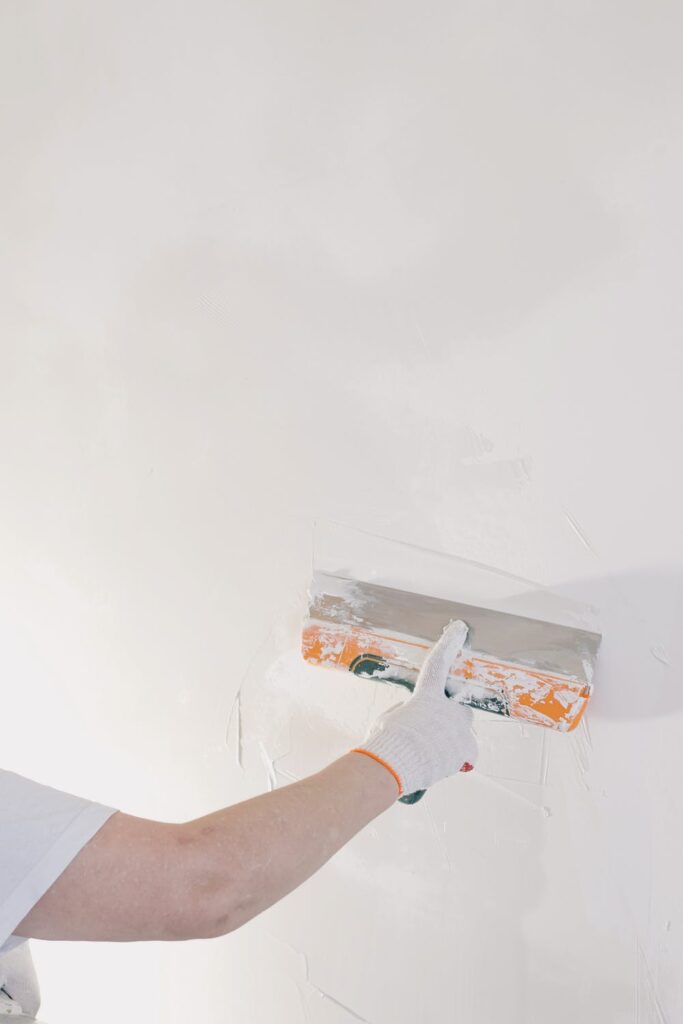10 Simple Techniques For Plasterer
Wiki Article
Plasterer Can Be Fun For Anyone
Table of ContentsThe 30-Second Trick For PlastererNot known Incorrect Statements About Plasterer The Only Guide for PlastererThe Facts About Plasterer Revealed
The plastering crew requires to bring their very own devices as well as tools and sometimes provide their very own grain (Plasterer). The Jobs that the plasterer is usually expected to achieve.

In locations where greater than one edge meets; the bead's ends are cut at an angle and the 2 or even more tips are placed as close with each other as allowable; touching however not overlapping. The grain is totally covered with plaster as well as the remainder of the wall surface as well as the plaster additionally helps to hold it solid.
This leaves a tidy, straight looking corner. An option technique seen in older homes of forming a rounded or bullnosed corner uses a quirked wooden personnel grain. The personnel grain, a 1-inch dowel with approx 1/3 slashed off the back, is set on the outside corner by the joiner on website, fastened to wooden plugs established right into the brick/block joints, or to the wood structure.
Things about Plasterer
The trait will hide the eventual little fracture that will create in between the staff bead and also plaster. Usually a plasterer has one trowel for "laying on" (the procedure of placing mud onto the wall).A lay-on trowel often tends to be also flat for this as well as the vacuum cleaner brought on by the water can argue the wall surface, requiring him to tear it off and thus he has to revamp the location. Finally, one might have a new trowel "not yet broken-in" which he will certainly used for "grinding"; this is when the plaster is nearly set and also he is smoothing out any kind of bumps or filling out any kind of little dips (feline deals with) to make the wall resemble a consistent sheet of glossy white plaster.
some wield trowels as big as 20 inches long but the norm appears to be a 16"5". From my experience the recommended brand is a Marshalltown stainless-steel. They have a brassy appeal to them, a rubber handle and will not pit or corrosion if unintentionally left in water over night while others choose a routine swipe trowel which needs a lot more upkeep however lasts for quite a lengthy time and the pitting can give it a "bite" that assists when "finishing" (the last pass when the plaster is establishing).
These device containers are initial maintained near the mix table and after that as the plaster begins to set are moved more detailed to the wall that is being dealt with. Time comes to be a huge aspect here as once the plaster starts to harden (collection) it will certainly do so rather quickly and the plasterer has a tiny margin of error to obtain the wall surface smooth.
Fascination About Plasterer
Any type of debris in the plaster can become a significant annoyance. Plasterers will commonly separate an area, (especially a large or high-ceilinged wall) into top and bottom. The one servicing top will certainly do from the ceiling's side to about Click This Link belly height and why not try these out also sweat off a milk crate for an 8-foot (2.The residence proprietor as well as the plasterer's manager will typically make a decision ahead of time what styles they will make use of in the house. Usually wall surfaces are smooth as well as occasionally ceilings. Usually a homeowner will certainly choose to have the ceilings utilize a "appearance" technique as it is much simpler, faster, and thus less expensive than a smooth ceiling.
The board feet is acquired by the hangers or approximated by the head subcontractor by counting the wallboards that come in an industry requirement of 8' to 12' long. Normally if the ceiling is to be smooth it is done initially, before the wall surfaces.
The factor for this is that inevitably when a ceiling is being serviced plaster will fall and also spray onto the walls. Nevertheless an appearance mix doesn't need to be ravelled when it starts to establish: therefore a resistant such as "Cream of tartar" or sugar can be used to extend the setup time, and is conveniently removed the wall surfaces.
Plasterer Things To Know Before You Buy
an additional reason is that a bird is normally left the leading edge after doing a smooth ceiling, after that it is simpler to keep this edge by doing the wall surface last. A textured ceiling typically doesn't require to be birded, just combined in with an extremely wet paint brush.The first point the plasterer often tends to do is discuss all the mesh-taped seams of the walls he is about to cover; in a very slim example - Plasterer. The wallboard attracts moisture out of this strip so when the plasterer looks look at this web-site at it once more when doing the remainder of the wall it will certainly not leave an indented seam that needs additional reworking.
This conserves much needed time as this procedure is a race against the chemical response. From the mix table the plasterer scoops some "mud" onto the center of his hawk with his trowel. Holding the hawk in his off-hand as well as his trowel in his key the plasterer after that scoops a bulging roll of plaster onto his trowel.
Report this wiki page